Background on the NACS connector
NACS stands for North American Connector Standard. In 2012, Tesla introduced a proprietary charging connector for the Tesla Model S and subsequently utilized it in their other electric vehicle models, including the Model X, Model 3, and Model Y. Complementing their product strategy, Tesla established the Supercharger network in the United States and expanded it to numerous other countries where Tesla vehicles were sold. All Tesla chargers have the NACS connector.
In November 2022, Tesla decided to rebrand its formerly proprietary charging connector, often informally referred to as the Tesla charging standard, as the “North American Charging Standard” (NACS). Additionally, Tesla made the specifications for this connector available to other electric vehicle manufacturers such as Ford. Tesla’s business logic for promoting NACS as the preferred connector centered on its compact design, ease of use of its NACS connector, as well as the higher prevalence of Tesla vehicles compared to CCS-equipped vehicles by a ratio of two-to-one. There are around 1.6M Tesla vehicles in operation in the U.S as of mid-2023 and Tesla is selling around 200k vehicles per quarter. Tesla’s Supercharger network boasted 60% more NACS charging points than all CCS-equipped networks combined.
NACS connector will change in the future
In June 2023, SAE International announced its intention to standardize this connector as SAE J3400. Subsequently, in August 2023, Tesla granted a license to Volex for the production of NACS connectors.
2023 Current State
J1772 = Non-Tesla
NACS = Tesla
2025 Future State
J1772 –Volkswagen, Nissan,
NACS – Tesla, Hyundai, Genesis, Kia, Ford, GM, Rivian, Polestar, Honda
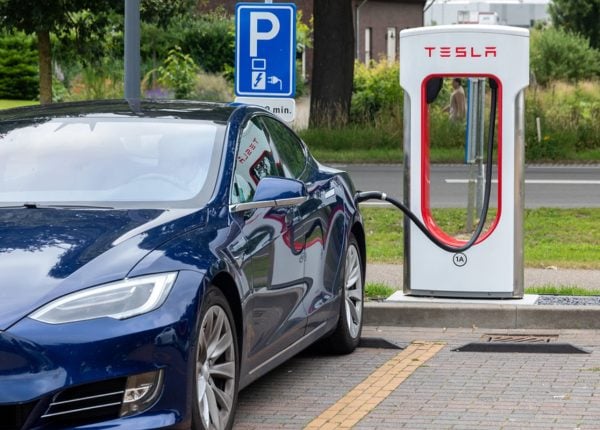
The above list is not exhaustive and based on data and announcements by the major EV manufacturers for new vehicle production.
The above changes will undo the drive toward standardization around the J1772/CCS1 connector standard and mean many commercial charging companies such as ChargePoint, Electrify America and EVGO will lose market share of commercial charging to Tesla.
J1772 and a NACS connector
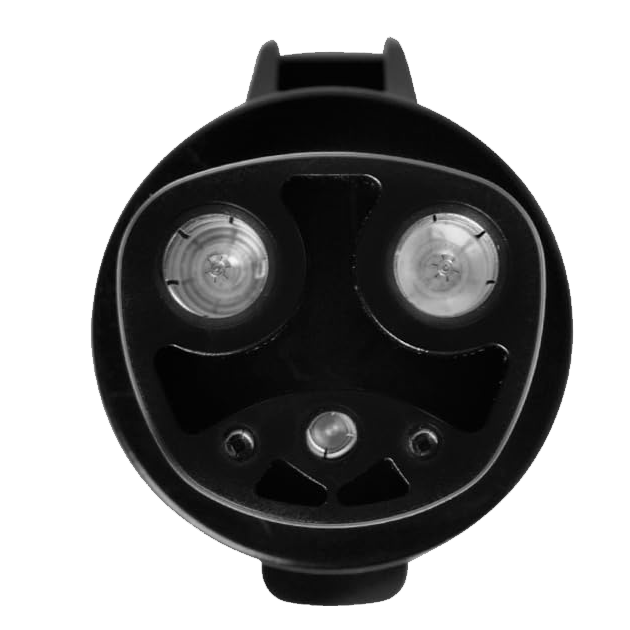
NACS
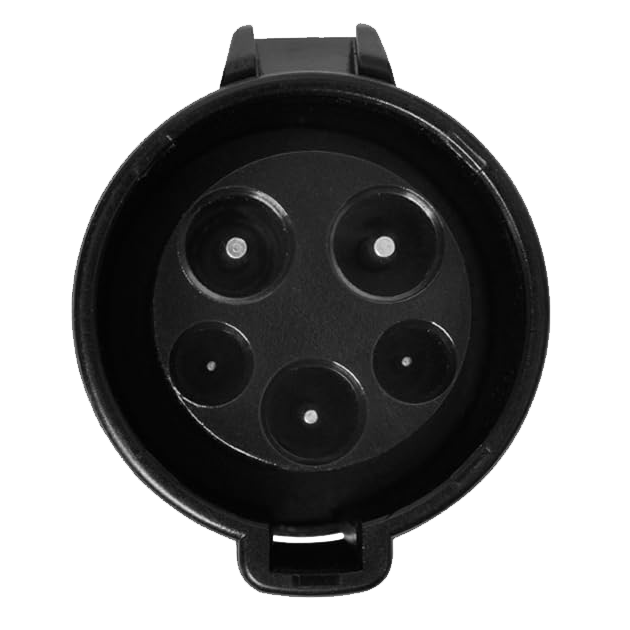
J1772
Benefits of the NACS design
Based on our use, we find the following differences
- The NACS cable is much lighter than a J1772 cable
- The NACS cable is much easier to maneuver
- The NACS charging port is smaller than the CCS 1 / J1772 for those who prefer sleeker design
- The NACS connector does not require a secure clipping into the connector dock, which is slightly easier since a J1772 you have to simultaneously locate the port, push and press the locking clip
Technically speaking NACS v J1772/CCS isn’t really any better but Tesla’s charging network that uses NACS has been. Unlike other EV companies, Tesla decided to control its own destiny in the deployment of charging stations, rather than leaving it up to 3rd parties. It took its supercharger network seriously and invested huge amounts of money into rolling it out and there is not much incentive for Tesla to change to CCS in the U.S given its technological and market superiority.
Residential NACS EV charging
EV Charging with a NACS connector are available in three ways:

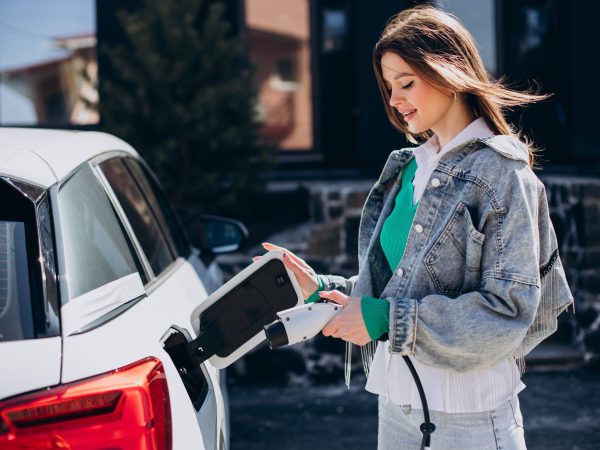
An adapter to convert your J1772 EV charger to a NACS. This is cost effective and eco friendly. The downside is that sometimes the adapters are a little stiff and less easy to maneuver.
Purchase a Tesla EV charger (EVSE) with an integrated NACS connector. These work best with Tesla vehicles due to the software integration
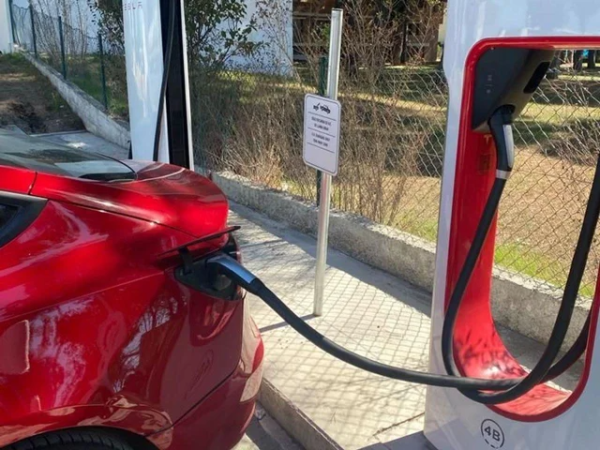
Purchase an EV charger (EVSE) with an integrated NACS connector. These will perform the same function as options #1 and #2
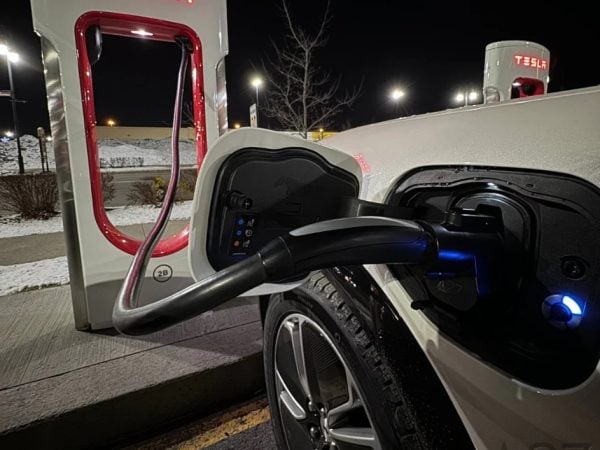
The Magic Dock
Tesla has been testing a new dual-connector “Magic Dock” at some of its Supercharger stations in North America, starting in March 2023. This Magic Dock is designed to allow electric vehicles (EVs) to charge using either the NACS (North American Charging Standard) or the Combined Charging Standard (CCS) version 1 connector. This is a significant development because it potentially opens Tesla’s Supercharger network to a wider range of EVs, as most non-Tesla EVs that use the previous J1772/ CCS 1 standard for charging.
As of June 2023, only 10 Tesla Supercharger locations in North America have been equipped with the CCS+NACS Magic Dock. However, it is expected that Tesla will expand the availability of this dual-connector system to more Supercharger stations in the future, likely after 2023. This expansion is driven in part by the opportunity to access infrastructure build-out subsidies from the U.S. Federal government for charging stations that include the J1772/CCS1 connectors during the mid-2020s. By including CCS connectors, Tesla can potentially tap into these subsidies and further promote the adoption of electric vehicles in the United States.
Magic Dock is currently limited to commercial charging stations. It would be useful as a residential EV chargers if had a Tesla and an EV such as a Toyota RAV 4 with a J1772 connector. Magic Dock is an easy to use adapter.
Which makers have announced they will move away from J1772 to NACS?
Fisker, Ford, General Motors, Honda, Hyundai Motor Group, Jaguar Land Rover, Mercedes-Benz, Nissan, Polestar, Rivian, and Volvo have separately announced that, commencing in 2025, their newly manufactured electric vehicles in North America will come equipped with the NACS charge port, with this implementation occurring on a vehicle-by-vehicle basis. This strategic move enables these automakers to offer Tesla Supercharging compatibility for their vehicles outfitted with NACS connectors, addressing the current incompatibility issue with the J1772 connector type. At the time of writing Nissan, Toyota and Volkswagen have not made formal announcements on their future charging connector strategy.
NACS standardization in North America
This seems to be the direction of traffic (please forgive the pun!). The North American market wanted to avoid the situation in Europe especially where different car manufacturers developed different connectors. This created confusion and problems for owners, especially at commercial charging stations where they found that their car did not fit a type J1772 connector. As we mentioned the NACS signatories will drive a shift from the current SAE J1772 standard but this is logical since Tesla owns the lion share of the charging infrastructure with its charging technology (uptime, payment, locations) generally accepted as best in class.
Potential advantages of a shift toward NACS EV Chargers
NACS EV chargers don’t provide any technical inherit benefits over:-
A potential U.S. standard
NACS could drive a standardization to one charging port type
Use of existing Tesla commercial charging stations
The J1772 connector is designed to be user-friendly, facilitating straightforward plug-in and disconnect actions. This user-friendliness encourages more individuals to embrace electric vehicles. Many EV owners like that the clip design securely clips the J1772 charger in place mechanically which the NACS EV charger type does not (this is purely done electronically and through the press fit design).
Simplified consumer experience
Many public charging stations such as EVGo and Electrify America are equipped with J1772 connectors, providing a wider charging solution across North America. This meant EV owners did not need to carry different types of adapter.
Ease of use
J1772 Chargers incorporate safety features, including interlocking mechanisms and ground fault protection, ensuring secure and hazard-free charging experiences.
Charging Speeds and Levels
NACS-type EV chargers offer flexibility in supporting a range of charging speeds and levels. The actual charging speed depends on two key factors: the electric vehicle’s capacity to accept charge (how quickly the battery can receive it) and the specifications of the charging station (voltage and amperage). While NACS chargers can provide fast charging for residential EV chargers, they can also function as ultra-fast chargers when deployed at Tesla’s Supercharger stations. These superchargers operate at substantially higher voltages, typically delivering power at 250 kW with a voltage of 400 volts.
Level 1 and Level 2 NACS EV chargers are more commonly used for residential charging, typically operating at voltage levels between 208 to 240 volts (with some variation depending on the voltage supplied by the grid to the residence).
NACS is used for level 1 and level 2 EV charging
Residential EV chargers or EVSEs will be increasingly NACS. We now provide NACS residential EV chargers also.
Differences between a NACS and a J1772 EV charger (EVSE)
NACS
J1772
Installation Tips and Best Practices
The installation of a NACS charging station necessitates careful planning and adherence to best practices:
Location
Should be well vented, ideally away from direct sunlight. EV charger should be ideall 42 to 48 inches off the floor. Choose a location in your garage that can accommodate that height. Accessibility: Pick a spot for your charger that gives you easy access to it. Consider any built-in shelving, workbenches or other features that could get in the way
Power
Ensure that the electrical circuitry is sufficient for the EV charger. A common fault is a 40 amp EV charger on a 40 amp circuit. A 40 amp 220 volt EV charger should be on a 50 circuit. 48 amp hardwired EV chargers should be on a 60 amp breaker since a 60am breaker has a max sustain pull rate of 48 amps. For continuous load (such as charging a vehicle for hours), you should only use 80% of the rated peak load. And 80% of 60A is 48A. That's the reason that your breaker, and wiring, should be rated at 60A.
Access
Choose a location for your EV charger / EVSE that provides easy access. Consider any built-in shelving, benches, pipes or water filtration systems that may get in the way
Professional Installation
It is advisable to enlist a qualified electrician for the installation
Weather Protection
If the charging station is located outdoors, provide adequate weather protection such as at least an IP66 waterproof rating
Regular Maintenance
Conduct routine maintenance checks the ev charger, the plug condition, wiring and circuit breaker
Enhance Your J1772 Charging Experience
To elevate your J1772 charging experience, you might explore accessories such as the Tesla to J1772 adapter, which permits Tesla owners to utilize J1772 charging stations. Furthermore, delve into an array of dependable and efficient EV Chargers to effortlessly power your electric vehicle.
Frequently Asked Questions about NACS
Will the NACS connector type become obsolete?
No. Given Tesla’s leadership in electric cars (Tesla is the Apple iPhone equivalent of EVs), NACS will become the gold standard in the U.S. for EV Chargers (EVSEs)
What is the NACS connector also known as?
It is also known as the Tesla connector or SAE J3400. It is also referred to as the Tesla charging standard
Is NACS more popular than J1772?
J1772 is currently used for all Non-Teslas, but with the growth in Tesla sales and the switch by many car makers to NACS (Ford, General Motors, Hyundai), NACS will become the most popular and widely used charger connector type.
What vehicles use NACS plug?
Currently Tesla only (as of late 2023) but from 2025, most automakers have announced plans to switch to a standard NACS plug. Toyota, Lexus, Ford, General Motors, Volvo, Hyundai, Genesis, Kia, Ford, GM, Rivian, Polestar and Honda have all announced plans to switch to NACS.
Is NACS a fast charger?
Yes. One of the benefits of a NACS charger is that exactly the same cable can be used for residential as commercial charging. No need to worry about CCS or CHAdeMO (Nissan and Mitsubishi) commercial charging connectors for J1772 type chargers.
Can I use my NACS EV charger to charge an EV with a J1772 charging port?
Yes, adapters are available that go on the end of your NACS EV charger and make it J1772 compatible.
Can Tesla use J1772?
No, for commercial charging Tesla has its proprietary charging network that uses a different technology. For other types of Tesla chargers such as any Tesla High Powered Connector, Destination Charger, or Mobile Connector a J1772 adapters can be used to charge J1772 EVs from a Tesla NACS EV charger.
